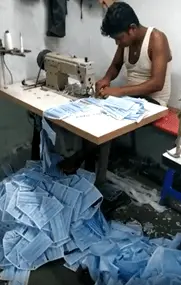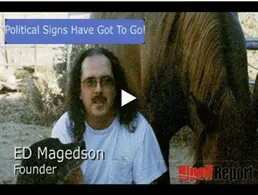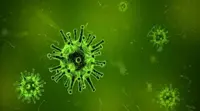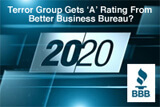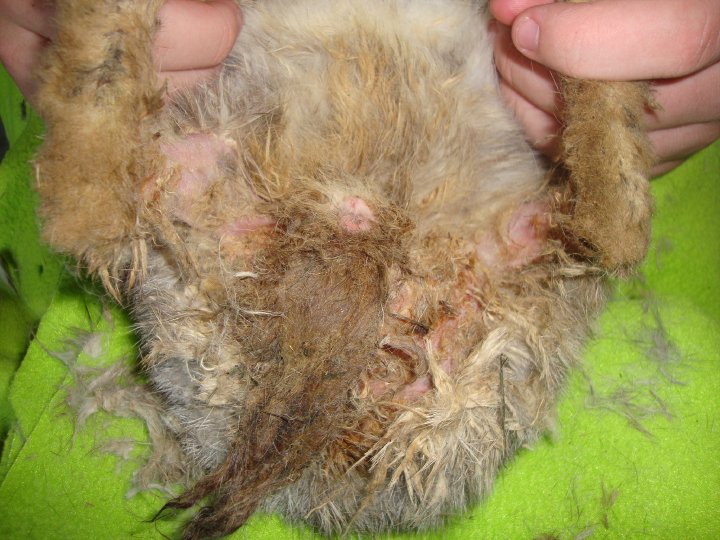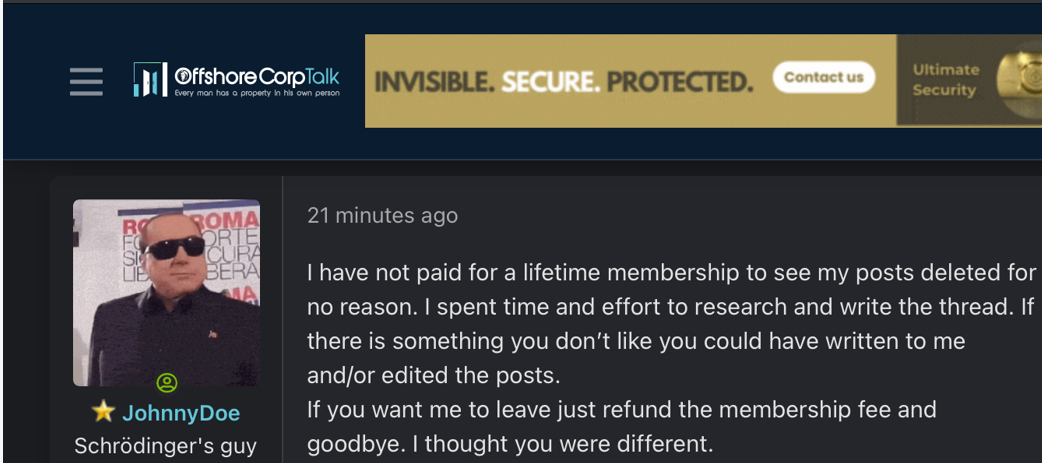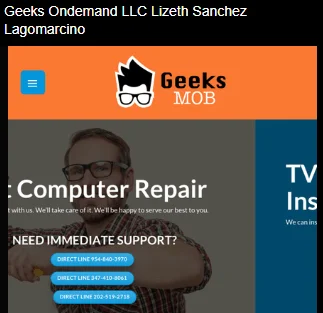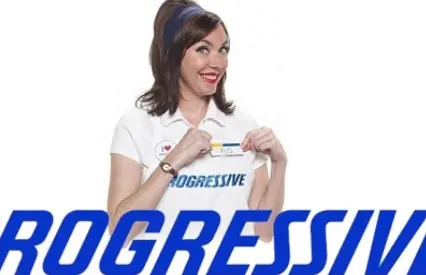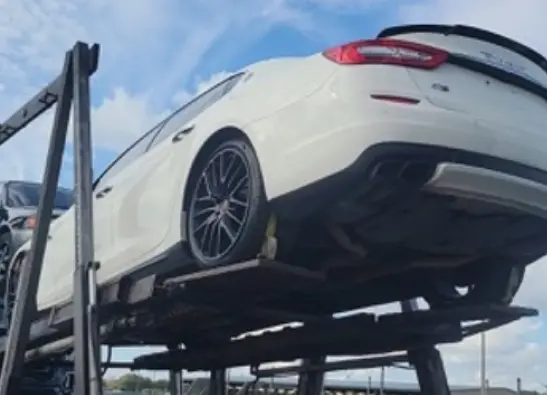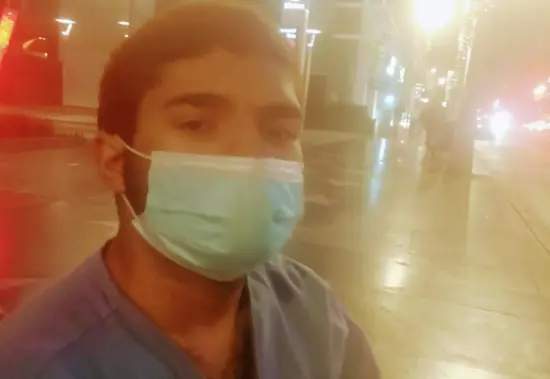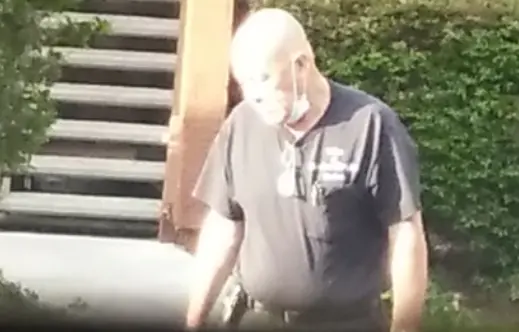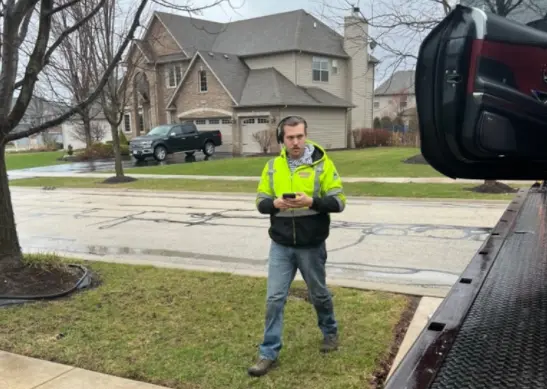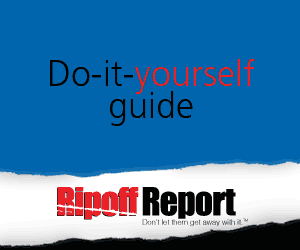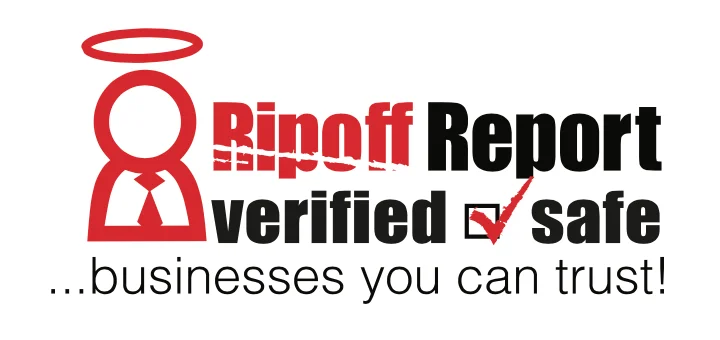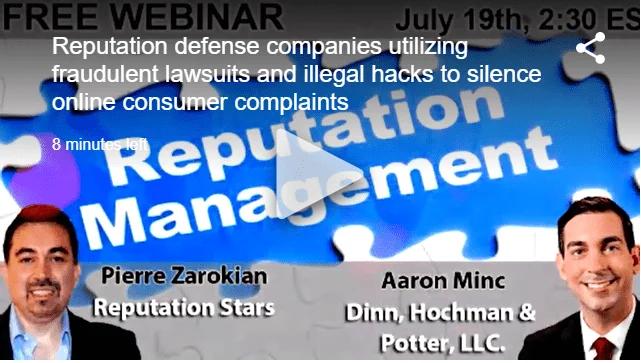Complaint Review: Little Miracles Rabbit Rescue - Atco New Jersey
- Little Miracles Rabbit Rescue 2308 Auburn Avenue Atco, New Jersey United States of America
- Phone: 856 210 6028
- Web: LittleMiraclesRR.org
- Category: Animal Shelters
Little Miracles Rabbit Rescue LMRR Little Miracles Rabbit Rescue - Money Abuse, Volunteer Abuse, Animal Abuse, Elder Abuse, Internet Abuse, LIES! Atco, New Jersey
*REBUTTAL Owner of company: rebuttal
*Consumer Comment: LMRR
*Consumer Comment: Department of Health Report
listed on other sites?
Those sites steal
Ripoff Report's
content.
We can get those
removed for you!
Find out more here.
Ripoff Report
willing to make a
commitment to
customer satisfaction
Click here now..
On the surface, Little Miracles Rabbit Rescue (LMRR) looks like a paradise for our fluffy, furry friends. Their website is impressive and professional. If you perform a google search on LMRR and you will find no less than 50 polished donation sites to raise funds and increase donations. These donation/charity event site span approximately 11 years. The earliest I was able to locate online was right around 2002.
Although the founding date of LMRR is subject to debate, Corson states more often than not that LMRR was established in January, 2000 when she was 18/19 years of age.
How did LMRR begin? That's up for debate also. In Corson's version it started when she bought a bunny from a pet store, only to bring it home and watch it die the next day.
A witness and close friends tell a completely version. This version is very different from her account. Kris Corson started out as a rabbit breeder. Back in April, 2000, she was adamant about being able to breed, even mixed breeds. She then started to work at a pet store. A few rabbits came in ill with coccidi. She took them on, with a plan to breed them, and in truth some of them did die, as was expected.
On Dec 22, 2000 in the time line, Corson stopped breeding and began "rescueing". The problem was, she was taking in rabbits at an alarming rate. (On 7/9, 2000, she had 26 rabbits, on 12/22, she had 65, it went up from there.)
Let's stop here and you decide how LMRR came to be. This may help you...The Better Business Bureau lists LMRR as 'Animal Insemination - Artificial'. Yes, a rabbit breeder. Which version do you find more plausable now? I could have told you, I was there. Corson has a funny way of twisting the facts and shifting blame. You needed to decide for yourself.
Let's continue.
Time marched on and at some point volunteers, among others, couldn't help but notice that Kris may have a serious problem. Kris had collected 350+ bunnies by 2003. You read that correctly, the bunnies were counted and by more than one person. At the time when Corson was confronted with this concern, Corson's response was that "a very one-sided - hostile campaign" was being launched against her.
Another, more disturbing concern was that Corson claimed to be "moving" the rescue. She made floor plans, and begged for money to help pay for moving. Her floor plans didn't include enough places for the rabbits to exercise. The rabbits were to be caged most of the time. She never addressed peoples concerns at that time either. She has always asked for money, and always defended her right to take on as many rabbits as she pleased, claiming they were all "okay". She has claimed to have 20-25 adoptions happening per week, yet the numbers of rabbits there didn't drop.
The rabbits were never moved. The shelter was never built. Where did all that money go that she collected I wonder?
The situation reached a breaking point, July 24th. The NJ SPCA arrived at the Corson residence for further investigation. After the investigation, Corson's mother, called for help last minute and asked everyone/anyone to take as many buns as possible. They were warned that pasturella and EC present. People helped, good people stepped in and cleaned up that horror-show they walked in and saw. One rescue stated the bunnies they took in from LMRR in Voorhees were severely underweight, malnurished and had mild to serious health issues.
After it was all was said and done, her mother was left with approx. 90 rabbits to care for.
Did I not mention that Corson had left the state? Yup, she had left NJ and her collection of rabbits that lived in the outdoor shed and in the basement of her mothers home in Voorhees, NJ. (I know the story of her abrupt move, but we would be opening more issues than just the rabbits. Let's leave that for you locate on the internet if you so choose and stick with the LMRR issue.)
In later years, Corson has been confronted about what happened. Corson's response was that "a very one-sided - hostile campaign" was launched against her. She denied it all. She denied the number of rabbts. She denied the "sick room". She denied all the donation money she collected. She denied bunnies were ill and flea infested. In the tales she tells, Corson changes the history of what happened in Voorhees, NJ.
I and others were there, the truth haunts us still. Looking back, I am saddened that I helped. I thought it would be the end of Corson's behavior, I was wrong. By helping in Voorhees, it only helped to enable her to continue and make bigger, more dangerous decisions in the future.
You readup on Little Miracles Rabbit Rescue and see what you locate. Sadly there is much more to tell, but that will be for another day and another topic. I'll tell you this, LMRR resurfaced in Florida, this time in her garage.
To get you started, here are a few links:
http://www.examiner.com/tampa-pet-services-in-tampa-bay/for-one-florida-rescue-organization-easter-is-a-bad-hare-day
http://www.petkb.com/Uwe/Forum.aspx/rabbit/260/The-end-of-LMRR
http://www.rabbitsonline.net/view_topic.php?id=62580&forum_id=7&page=1
http://groups.google.com/group/alt.pets.rabbits/browse_thread/thread/962b973b0506a00e/d2cae2d8115e1b98
http://www.care2.com/news/member/442150667/857314
http://www.rabbitsonline.net/view_topic.php?id=62580&forum_id=7&jump_to=834822
http://www.facebook.com/horrors.lmrr
http://www.petkb.com/Uwe/Forum.aspx/rabbit/260/The-end-of-LMRR
http://www.rabbithabit.org/adoptables/memoriam.asp
http://www.rabbited.0catch.com/over.html
http://www.facebook.com/horrors.lmrr#!/home.php?sk=group_107799202629567
http://bunnyjustice.com/
http://www.petkb.com/Uwe/Forum.aspx/rabbit/260/The-end-of-LMRR
http://www.rabbitsonline.net/view_topic.php?id=62580&forum_id=7&jump_to=833979
http://www.facebook.com/#!/pages/Little-Miracles-Rabbit-Rescue/150460001646201
http://www.facebook.com/#!/home.php?sk=group_191071520923696
http://www.facebook.com/#!/pages/LMRR-Hoarding-Animal-Abuse/182803015088084
This report was posted on Ripoff Report on 05/17/2011 12:53 AM and is a permanent record located here: https://www.ripoffreport.com/reports/little-miracles-rabbit-rescue/atco-new-jersey-08004/little-miracles-rabbit-rescue-lmrr-little-miracles-rabbit-rescue-money-abuse-volunteer-730096. The posting time indicated is Arizona local time. Arizona does not observe daylight savings so the post time may be Mountain or Pacific depending on the time of year. Ripoff Report has an exclusive license to this report. It may not be copied without the written permission of Ripoff Report. READ: Foreign websites steal our content
If you would like to see more Rip-off Reports on this company/individual, search here:
#3 REBUTTAL Owner of company
rebuttal
AUTHOR: GEORGE HOEZ - (United States of America)
SUBMITTED: Saturday, January 19, 2013
how do i know this is correct?i am trying to adopt a rabbit and can no believe how difficult it is.i just e mailed lmrr,so i do not know anything about them.
#2 Consumer Comment
LMRR
AUTHOR: Spinach - (USA)
SUBMITTED: Monday, September 24, 2012
I have a response for Author Patti,
Quote:
A few dirty cages and poop on the floor of a rabbit rescue is NOT
abuse!! When volunteers come to feed/water rabbits, the dishes are going
to be empty! An accidental litter can happen to any rescue or foster
home!! A picture of a rabbit with a wet butt isn't grounds to shut down a
rescue! Photos of a lot of properly housed rabbits don't show the
rescuer is a hoarder no matter what the caption says! A ten-year-old
incident where rabbits were re-homed is no longer relevant!! These are
not 'crimes'!
Response:
Do you work in rabbit rescue? I do and your statement above is not only of ignorant but offending.
1. There should Never be filthy rabbit cages such as those photos with
feces piled several inches high, this did Not happen in 2 days- is not
only a concern of neglect but also attracts flies which bring fly strike
and maggots to the rabbits.
2. Food bowls may go empty, but the rabbits should be fed 2x a day
pellets and Hay and water should Never go empty! Rabbits not eating or
pooping for 8-12 hours is considered an emergency due to GI Stasis, and
rabbits can dehydrate in 24 hours not to mention the heat on top of that
can cause heat stroke.
3. A wet butt? Excuse me but urine burn and matted hair is extreme neglect and also did not happen in one or two days.
4. A 10 year old neglect incident added with several others over a
period from 2001 - 2012 is of great concern and should be grounds to
shut down and never re-open, especially when your facility has moved
from State to State with animal cruelty complaints and fraud complaints
in those States.
5. Taking in more animals than you can afford to house or feed is in fact, hoarding.
Hopefully DOH and NJ SPCA will re-visit regularly, the last inspection
where the rabbit was found under a 6' pile of boxes and debris was
removed, is that rabbit alive??? No excuses for the neglect going on
at this proclaimed rescue, if this was a backyard breeder they
would have already been shut down and for good reason. What does this
tell me? That the authorities are not doing their jobs until recently.
This is a Total Disgrace and the fact that it is a Rescue is even more Shameful
https://picasaweb.google.com/MLMLPS43/LMRR
#1 Consumer Comment
Department of Health Report
AUTHOR: Spinach - (USA)
SUBMITTED: Friday, September 07, 2012
Little Miracles Rabbit Rescue
2308 Auburn Ave
Atco, NJ 08004
(Township of Waterford, Camden County)
Continuation sheet for inspection conducted on July 24,
2012 by Linda Frese and Renee Cirillo, New Jersey Department of Health, and
James Perry, Camden County Department of Health.
Section 8:23A Deficiency
1.2(a) Facility is in substantial non-compliance with the provisions of N.J.A.C. 8:23A 1 through 13.
1.2(b) A certificate of local health inspection was not prominently displayed at the facility.
1.2(c) The back area of the small animal room is
currently under construction and outdoor enclosures are being
installed. Plans must be submitted to the local health authority for
review and approval for both indoor and outdoor renovations and
improvements before construction and operation begins. A schematic
showing the layout and operation of the ventilation system used for the
isolation room must also be submitted in the plans to the local health
authority. The ventilation in an isolation room must exhaust directly
to the outdoors and must not mix with the air of the general
population.
1.3(a) The layout of the
caging in the main rabbit room creates a nuisance. Some of the storage
items and cages along the outside walls in this room designated as the
projects, are in close proximity to the wooden rabbit enclosures in
the center of the room designated as the condos, restricting movement
of staff during the cleaning process. A cage on the floor, in the corner
of the isolation room containing an animal named Bertucci, was made
inaccessible due to the storage of cages, carriers,
and boxes stacked over 6 feet high on top of his cage. Hindering
immediate access to animals in cages constitutes a nuisance.
1.3(c) Food and hay is stored in large uncovered containers unprotected from contamination.
1.3(d)
A bin containing alfalfa was marked with a sign that said Do Not
Use and was stored with the pelleted food and hay that is used on a
daily basis. Food waste that is deemed
to be contaminated or otherwise unusable must be removed and disposed of.
1.3(e)
The facility had no hot water available at the time of inspection and
the gas was said to be turned off since Friday. The gas company, South
Jersey Gas, was contacted by NJDOH staff and the company confirmed
that the gas supply was shut off to that address, but not due to
construction or repair of any gas lines as stated by facility
management. The reason for the gas shut off by the company was not
disclosed due to privacy protection reasons.
1.3(f)
The clothes dryer exhaust does not appear to be vented to the outdoors
and an accumulation of lint was found around the dryer, on the floors,
walls, and on the supplies kept on the shelf next to the dryer. The
electric outlet above the dryer also contained an
accumulation of lint and cob webs
posing an electrical fire hazard.
Vegetation is overgrown in the
back of the building with wild plant growth approximately 3 feet
tall. Premises shall remain free of accumulations of trash and the
overgrowth of vegetation up to the property line or within
20 feet of the facility.
Note
for 1.4 (c) Although
the air conditioning unit was not working properly at the (not a
deficiency) at time of this inspection, the exhaust fans continued to
work properly and the indoor temperature readings varied between 77
degrees and 80 degrees Fahrenheit. The outdoor ambient temperature
readings were 97 degrees Fahrenheit.
Animals housed at the facility did not appear to be in distress from heat at the time of this inspection.
1.4(d)
Lighting in most areas of the facility was insufficiently distributed
to permit routine inspection and cleaning during the entire
working period. Most of the cages against the walls in all rooms were
dark and inspectors were unable to view inside the enclosures without
the use of a flashlight.
1.4(f) All
interior building surfaces must be impervious to moisture and readily
cleaned. The wood behind the metal cages in the back of the small
animal room is not impervious and is stained with urine.
The floors in the isolation room are stained and are not impervious to moisture. The floor in
the
office area and the main access area between the main rabbit room and
the small animal room contains carpeting. The carpet behind and around
the desk had numerous rabbit droppings on it and large water type
stains. This room smelled of a sour, possibly vomit type odor. Animals
shall
not be permitted on surfaces that are not impervious and
easily cleaned and disinfected.
Carpeting used in animal enclosures must be removed and replaced with
new carpeting when wet or contaminated with excreta, or when a different
animal is placed in the enclosure. Carpeting is not impervious to
moisture and cannot be readily cleaned and disinfected.
Some base edges of the exterior wall that meet the floor are exposed concrete block and are not impervious to moisture.
1.5(e)
Outdoor enclosures are being erected that consist of sand as flooring
material. Surfaces of outdoor enclosures shall be constructed and
maintained so that they are impervious to moisture and may be readily
cleaned and disinfected; run off from outdoor enclosures must be
properly disposed of as required by the municipal sewerage authority.
1.6(a)
Some animal crates and cages are stacked, but are not designed for this
purpose. Debris and waste from upper cages falls into the cages
below. Cages and crates must not be
stacked one on top of the
other unless suitable support structures and barriers are used. The
supports must be able to hold the weight of the uppe cage and prevent
the upper cage from resting on the lower cage. Barriers must be used
between the upper and lower cage to prevent contamination of the lower
cage from debris and waste from the upper cage.
Animal
enclosures are not maintained in good repair. The wooden painted cages
designated as the condos have chewed and worn surfaces and are unable
to be properly cleaned and disinfected. Wooden cages in the front of
the main rabbit room are extensively saturated with urine and so
severely chewed that they can no longer be cleaned, disinfected, or
deodorized. These cages must be removed from the facility.
1.6(a)4.
Animals are unable to remain clean and dry due to the excessive amount
of excreta in their primary enclosures.
1.6(d)
Animals are rotated to a playpen during the cleaning process. At the
time of this inspection, the playpen contained an accumulation of
excrement and debris from other animals. This
playpen was not
cleaned and disinfected between inhabitants. All enclosures,
carriers, and holding pens or runs
must be cleaned and disinfected before another animal is placed in them.
1.7(a)
Hay used as food for the rabbits and pellet type food is not discarded
and replaced on a daily basis as required. Pellet type food is only
given every other day.
1.7(b) Food,
particularly hay, is placed in the litter boxes for the rabbits to eat.
This hay is contaminated with excreta and is not discarded and replaced
on a daily basis as required in 1.7 (a) above. Other food placed on
the floor of enclosures is also contaminated with excreta and needs to
be removed and replaced on a daily basis.
1.7(d)
Hay used as food for the rabbits is placed inside the litter boxes and
quickly becomes contaminated by excreta. Containers of food shall be
accessible to animals and shall be located so as to minimize
contamination by excreta.
1.7(e) Feeding pans are not cleaned and disinfected on a daily basis as required.
1.7(h)
Water bottles are not cleaned on a daily basis. The bottles are topped
up with water when they become less than half full. Receptacles for
water must be cleaned daily.
1.8(a)
Excreta is not removed from primary enclosures often enough to prevent
contamination of the animals contained therein, and to control odors.
At the time of inspection,
enclosures contained an excessive amount of excreta and odors were uncontrolled due to the amount of
urine
and feces in each primary enclosure, including urine and feces
saturated wood pellets used as litter in litter receptacles.
Animals
are not removed from enclosures during the cleaning process. At the
time of inspection, cleaning fluids were poured into the enclosures
containing rabbits, for the purpose of allowing the cleaning fluid to
soak to remove caked on waste materials.
Cleaning staff sprayed cleaning
solutions and vacuumed enclosures while the animals remained in the
enclosures.
1.8(b) Primary enclosures are not cleaned often enough to prevent an accumulation
of
debris and excreta. At the time of this inspection, there was an
excessive amount of excreta and debris on cage floors and resting
benches.
1.8(c) Cages and hard surfaced
pens are not cleaned and disinfected on a daily basis. Floors are swept
and occasionally wet mopped but are not disinfected on a daily basis.
All floors, animal enclosures and other pens or holding areas must be
cleaned and disinfected on a daily basis. Urine encrusted stains in
primary enclosures and litter receptacles must be thoroughly scrubbed to
remove the stains before the final disinfection process.
1.8(d)
All interior surfaces throughout the entire facility were covered in
dust, dirt and debris and not kept clean. All surfaces, including the
area where cleaning supplies are stored and where hay and feed is
dispensed must be kept free of an accumulation of dust, dirt and
debris. Cobwebs, dirt and debris must be
removed from all areas, including ceilings, walls, shelves, electric
outlets, lighting fixtures, stored caging, carriers, etc. Areas around
sinks, wash basins, counter tops, refrigerators, food preparation
areas, and the washer and dryer area must be scrubbed clean and kept in
good repair. Items creating clutter must be either removed or properly
stored to prevent nuisances and to facilitate proper
cleaning throughout the facility.
Areas around primary enclosures
where urine, feces, and debris accumulate must be thoroughly scrubbed
to remove the dried, encrusted urine stains and cleaned and disinfected
on a daily basis.
1.9(a) Records must be
made available regarding the treatment of animals at the facility, such
as daily medical logs indicating the type of treatment provided and the
duration of treatment. Evidence of veterinary examinations and site
visits with documented findings must also be made available to
inspectors. These records are required to document compliance with
the provisions of this act.
1.9(d)
A rabbit named Dante was brought into the facility on 4/18/12 with a
severe leg injury. The leg was splinted by the shelter president on the
day of arrival, but records show that this animal was not seen by a
veterinarian until 5/11/12. There was no evidence
produced at the time of this
inspection that showed the rabbit was provided with at least prompt,
basic veterinary care as required. This rabbit was not at the facility
on the date of this inspection.
1.9(g)
Multiple items, including a dishwasher was stored in the isolation room
at the time of this inspection. A refrigerator used to store medications
for use in the isolation room was blocked by 2 large rolling storage
units.
The isolation room is not to be used for any purpose
other than the segregation of animals with signs of communicable
disease. All items that are being stored in the isolation room must be
removed, cleaned and disinfected, or disposed of if the item can not be
disinfected,
and appropriately stored elsewhere to prevent contamination.
Animals
that were not exhibiting or being treated for signs of
communicable disease were housed in the isolation room at the time of
this inspection. This included wild rabbits that had been raised by a
surrogate mother and were isolated due to stress; a
rabbit named Allyson that was isolated due to pregnancy; Bertucci,
isolated for a bite wound; Lennox, isolated for bad teeth; and a rabbit
brought to the facility for boarding with no name or cage card. There
were no daily treatment logs or other records showing that animals
housed in the isolation room were being treated for a communicable
disease.
If animals need to be segregated for reasons other than communicable
disease,
they must be housed in a different area of the shelter that meets the
needs of the animals, such as a quite area to provide relief from
stress. This would also include animals that are brought into the
shelter and are being observed for a period of time before being placed
with the general population, but are not currently exhibiting signs of
communicable disease.
1.10(a)1. Stray animals
are accepted into the facility although the facility is not licensed as a
pound and the shelter is not contracted with or authorized by any New
Jersey municipality to accept and impound stray animals. Any animal
brought to the facility that is known to be or suspected to be a stray
animal must not be accepted into the facility, but must be turned over
to the contracting animal impoundment facility for the municipality
where the animal was found.
Wild rabbits were found at the
facility at the time of this inspection. Wild animals must be turned
over to a wildlife rehabilitator currently licensed in New Jersey by the
New Jersey Division of Fish and Wildlife.
People bringing
animals to the facility are ordered to sign an owner surrender form even
when the person bringing the animal into the facility states that they
are not the owner of the animal and the animal was found as a stray.
One example is a rabbit named Princess, 8 weeks old,
which arrived at the facility on 6/19/12, ID#PR061912. This practice of falsifying documents must
cease immediately and all stray animals must be handled as stated above.
1.13(a)
Some animals housed at the facility did not have proper records at the
time of this inspection. A cage card on a cage that was empty, but had
not been cleaned, showed that Aerie, ID number 5/9/12, was adopted on
5/19/12. This animal was said to be owned by the
facility president, but when questioned, the
name of the animal as stated on the cage card was unknown and no
records were found for this animal. Inspectors were told that several
animals marked as adopted on the cage card were actually owned by the
facility president.
Animals that are said to have been born at the facility are recorded as stray on the animals records.
All
animals housed at the shelter must have proper records indicating the
date the animal arrived, description of the animal, breed,age, and sex;
name of the owner or person from whom the animal was acquired, and the
final disposition of the animal when the animal dies or otherwise leaves
the facility.
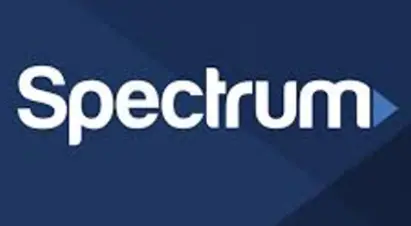
Advertisers above have met our
strict standards for business conduct.

